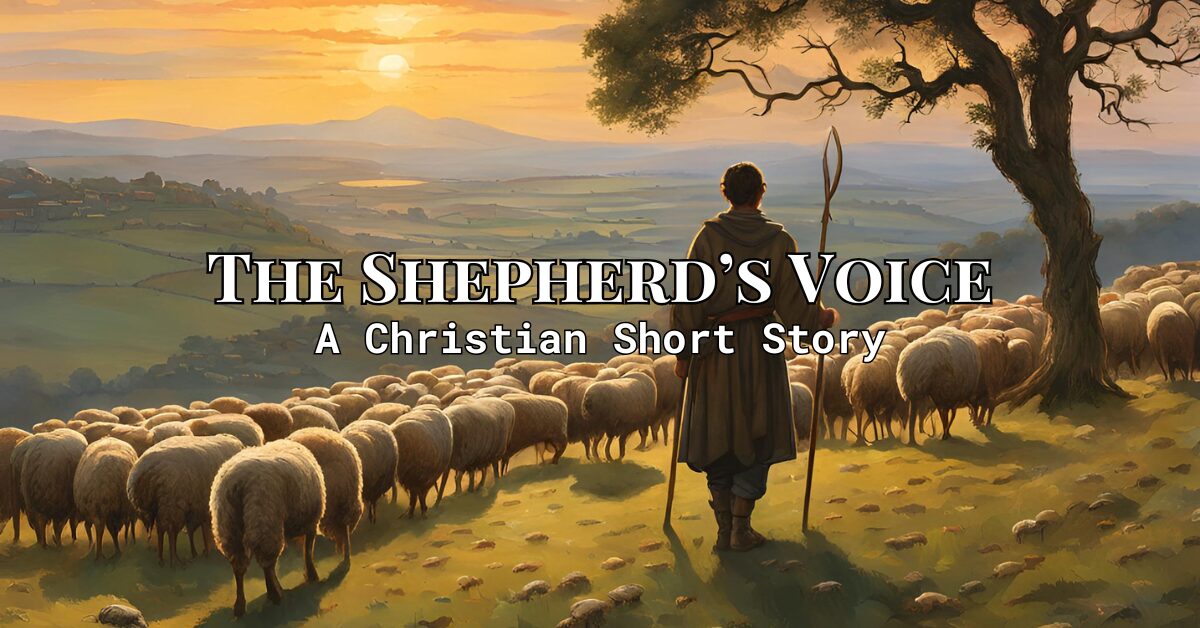In the treasure trove of biblical narratives, the Parables of Jesus stand out as one of the most captivating and enlightening aspects of His ministry. These simple yet profound stories, embedded with deep spiritual truths, have transcended time and culture, continuing to resonate with readers and seekers of truth today. This blog post delves into the heart of Jesus’ teachings through His parables, offering a glimpse into the wisdom and insights they hold for our lives.
A parable, by definition, is a short, allegorical story designed to convey a moral or spiritual lesson. The Parables of Jesus, numbering 45 in total (our own number, read more later in the article), utilize everyday events, characters, and objects familiar to His contemporary audience, making complex kingdom truths accessible to all. Through these parables, Jesus was able to reach a diverse audience, from the deeply religious to the outcasts of society, teaching in a way that engaged, challenged, and provoked thought among His listeners.
Why did Jesus choose to teach in parables? This method allowed Him to reveal the mysteries of God’s kingdom in a manner that was both inviting and veiled, offering profound insights to those with open hearts while concealing the fullness of truth from those unwilling to see or hear. The parables of Jesus invite us into a reflective journey, encouraging a deeper exploration of our faith, beliefs, and actions.
As we embark on this exploration of the 45 Parables of Jesus, we will uncover the layers of meaning within each story, offering brief explanations that illuminate their relevance and application to our lives today. Join us as we journey through these timeless teachings, allowing the transformative power of Jesus’ words to shape our understanding of faith, morality, and the kingdom of God.
Content
What is a parable?

A parable is a succinct, figurative story or narrative, typically used to illustrate and teach moral or spiritual lessons. It employs simple, everyday situations and elements to convey deeper truths and insights, often leaving the audience to reflect and draw conclusions about the intended message. Parables are a common teaching tool in various cultures and religious traditions, notably used by Jesus in the Christian New Testament to communicate complex principles of the Kingdom of God in an accessible and engaging manner.
Why Jesus Used Parables

The use of parables by Jesus is a distinctive and defining aspect of His teaching ministry. These stories, rich with earthly scenarios but heavenly meanings, served multiple purposes, reflecting the depth and breadth of Jesus’ pedagogical methods. Understanding why Jesus chose this method provides insight into His intentions and the impact of His teachings.
To Reveal and Conceal Truths
One of the primary reasons Jesus used parables was to simultaneously reveal and conceal spiritual truths. To those open-hearted and seeking understanding, parables were a means to unveil the mysteries of the Kingdom of God. However, for those with hardened hearts or closed minds, the same stories obscured these truths, fulfilling prophetic declarations about people who would “look but not see and hear but not understand” (Isaiah 6:9-10). This dual function allowed Jesus to communicate deep truths to those ready to receive them while leaving others to ponder and seek further.
To Engage and Provoke Thought
The Parables of Jesus, by their nature, are engaging. They draw listeners into familiar settings, only to twist expectations with a deeper, often surprising, spiritual lesson. This method provoked thought and reflection, encouraging listeners to go beyond surface-level understanding and explore the deeper implications of Jesus’ teachings for their lives. The storytelling format made His lessons memorable, enabling the teachings to be pondered, discussed, and passed on long after the original conversation.
To Encourage a Personal Response
Jesus’ use of parables demanded a personal response from His audience. By presenting spiritual truths through stories, listeners were invited to identify themselves within the narrative—whether as the prodigal son, the good Samaritan, or the soil receiving the seed. This identification process forced individuals to reflect on their own spiritual condition and their relationship with God, encouraging a response of repentance, faith, or deeper commitment.
To Teach in an Accessible Way
The Parables of Jesus made complex theological concepts accessible to a broad audience. Jesus’ listeners came from various social, economic, and educational backgrounds. Through the use of everyday situations and characters—farmers, servants, kings, and weddings—Jesus communicated profound spiritual truths in ways that were relatable and understandable to all. This accessibility ensured that His teachings could be grasped by anyone genuinely seeking truth, regardless of their societal status or scholarly knowledge.
To Fulfill Scripture
Jesus’ use of parables was also a fulfillment of Old Testament prophecy. By speaking in parables, He was fulfilling what had been foretold about the Messiah—that He would speak in riddles and parables (Psalm 78:2). This aspect of His ministry underscored His identity as the promised Messiah and His teachings as the unfolding revelation of God’s plan for humanity.
The parables of Jesus were and still are a masterful approach to teaching that catered to the diverse needs of His audience, offering spiritual insights in a manner that was both challenging and enlightening. Through these stories, Jesus not only communicated the essence of God’s kingdom but also invited listeners into a dynamic and personal engagement with the truth. The Parables of Jesus continue to serve as a vital tool for spiritual reflection and growth, demonstrating the timeless relevance of Jesus’ teachings.
How Many Parables of Jesus Are There?

The question of how many Parables of Jesus exist in the New Testament is one that yields various answers, depending on the criteria used for classification. The Parables of Jesus are central to His teaching method, offering profound insights into the kingdom of God through stories drawn from everyday life. Let’s explore the factors that contribute to the different counts of these parables and explain why we have settled on the number 45.
Diverse Interpretations and Criteria
Defining a Parable: The first step in counting the Parables of Jesus involves defining what constitutes a parable. While traditionally seen as simple stories used to illustrate a moral or spiritual lesson, some scholars include allegories, similes, and metaphoric sayings in their definition. This broader interpretation results in a higher count.
Synoptic Gospels and Repetition: The Synoptic Gospels (Matthew, Mark, and Luke) contain many of Jesus’ parables, some of which are repeated across the texts. The decision to count these repetitions as separate parables or as a single instance affects the overall number. For instance, the Parable of the Lamp appears both in the Gospels of Matthew and Luke.
Settling on 46 Parables
After considering various interpretations and criteria, we have settled on the number 45 for the Parables of Jesus. This count strikes a balance between the narrower and broader definitions of parables, including those stories most commonly recognized and taught as parables, as well as a few less commonly included under the broader interpretation. This count is designed to provide a comprehensive overview of Jesus’ parabolic teaching, ensuring that readers gain a full appreciation of His storytelling method and the diverse themes He explored.
Examples and Clarifications
The Well-Known and the Less Familiar: Among the 45 parables of Jesus, there are well-known parables such as The Good Samaritan and The Prodigal Son, which epitomize Jesus’ teaching on love, forgiveness, and compassion. Then there are less commonly cited parables, like The Unforgiving Servant or The Workers in the Vineyard, which delve into themes of mercy, justice, and the kingdom of God’s inclusive nature.
Inclusion Criteria: In reaching the number 45, we’ve included parables that are clear stories, like The Rich Fool and The Wise and Foolish Builders, and those that might also be considered allegories or symbolic narratives. This inclusive approach allows us to explore the breadth of Jesus’ teaching style and the depth of the spiritual truths He communicated.
The Parables of Jesus are a fundamental aspect of His teachings, rich in wisdom, spiritual insight, and practical guidance. While scholars and theologians may debate the exact number, settling on 45 parables provides a broad and inclusive foundation for study and reflection. These stories, whether addressing the nature of God’s kingdom, the call to ethical living, or the importance of faith and perseverance, invite readers into a deeper engagement with the teachings of Jesus. By exploring these 46 parables, believers and seekers alike can gain a fuller understanding of the transformative messages at the heart of the Christian faith.
Why You Should Read and Study the Parables of Jesus

The Parables of Jesus are among the most compelling components of the New Testament, offering timeless wisdom through simple yet profound narratives. Reading and studying these parables is not just an academic exercise; it’s a journey into the heart of Jesus’ teachings, with profound implications for personal growth, understanding of the Kingdom of God, and our daily lives. Here’s why delving into the parables is essential for believers and seekers alike.
Deepen Your Spiritual Understanding
Unlocking Kingdom Secrets: The parables are Jesus’ way of revealing the mysteries of the Kingdom of Heaven. They offer insights into God’s nature, His kingdom’s principles, and His expectations for His followers. Studying these stories allows us to grasp concepts that are otherwise difficult to understand, providing a deeper appreciation of our faith’s spiritual richness.
Personal Revelation: As you reflect on the Parables of Jesus, they become more than historical accounts; they speak directly to your life. The Holy Spirit can use these stories to reveal personal truths, convict, encourage, and guide you in your spiritual journey. Each parable has the potential to become a personal revelation that deepens your relationship with God.
Enhance Moral and Ethical Insight
Moral Compass: The Parables of Jesus are rich in moral and ethical teachings, often presenting scenarios that challenge conventional wisdom and provoke deep ethical contemplation. Through these stories, Jesus teaches us about love, forgiveness, compassion, justice, and how to navigate the complexities of life with wisdom and integrity.
Practical Applications: Beyond their moral teachings, the parables offer practical guidance for everyday living. They address real-life issues such as how to deal with conflict, the importance of being prepared, and the value of persistence, making them directly applicable to our daily decisions and interactions.
Cultivate Empathy and Compassion
Walking in Others’ Shoes: The Parables of Jesus often feature characters from various walks of life, enabling us to see the world from different perspectives. This fosters empathy and compassion, as we’re invited to understand the struggles, hopes, and pain of others, reflecting Jesus’ own compassion for all people.
Inspiring Action: The parables don’t just change how we see the world; they inspire us to act within it. Whether it’s the Good Samaritan’s example of neighborly love or the persistent widow’s advocacy for justice, the parables encourage us to be agents of kindness, justice, and mercy in our communities.
Foster Community and Dialogue
Discussion and Debate: The open-ended nature of many parables invites discussion and debate, making them excellent tools for fostering community and dialogue within study groups, families, and among friends. They encourage us to engage with Scripture, question, seek deeper understanding, and share insights, thereby strengthening our communal bonds in faith.
Cultural and Historical Insight: Studying the parables also offers cultural and historical insights into the time of Jesus, helping us understand the context of His teachings and the societal norms of the day. This enhances our appreciation of the Gospel’s transformative power and its ongoing relevance.
The parables of Jesus are a gateway to deeper spiritual insight, moral reflection, and practical guidance for living a life aligned with the values of the Kingdom of God. They challenge us to think, reflect, and grow in our understanding of God and ourselves. By reading and studying the parables, we allow the timeless wisdom of Jesus to shape our hearts, guide our actions, and inspire us to live out the love and compassion He exemplified. Let the parables be your guide in the journey of faith, offering light on the path to deeper spiritual fulfillment and understanding.
The 45 Parables of Jesus
The Parables of Jesus contain immense wisdom and practical life lessons you should aim to live out in your own life. Examine them, interpret them, find out how you can apply each teaching in yourself. You will find links to each parable where you can learn much more from the teachings.
Here is a list of The Parables of Jesus:
1. New Cloth on an Old Coat
Within the Parables of Jesus, Matthew 9:16 presents a thought-provoking analogy. Jesus compares old garments with new cloth, highlighting the need for alignment in beliefs and practices. This concise yet profound lesson sheds light on the importance of embracing spiritual growth and adaptation.
Read: New Cloth on an Old Coat
2. New Wine in old Wineskins
In the Parable of the New Wine in Old Wineskins, Jesus offers a vivid metaphor for embracing change. He compares new teachings to fresh wine and traditional beliefs to old wineskins. This brief yet powerful story illustrates the necessity of receptivity and flexibility in spiritual growth.
3. Lamp on a Stand
In Matthew 5:14-16, Jesus uses the “Lamp on a Stand” analogy to urge believers to shine as lights in the world. He compares them to a lamp placed on a stand, illuminating darkness and bringing glory to God. This metaphor inspires Christians to live visibly for God’s glory.
Read: Lamp on a Stand
4. The Wise and the Foolish Builders
In the Parable of The Wise and the Foolish Builders, found in Matthew 7:24-27, Jesus illustrates the importance of a solid foundation. Through a simple analogy of building houses on rock and sand, he imparts a timeless lesson on the significance of wise choices and steadfast faith for enduring strength.
5. The Moneylender
In the Parables of Jesus, the Moneylender story, found in Luke 7:41-43, offers a poignant lesson in forgiveness and gratitude. Jesus compares debts forgiven to love displayed, highlighting the transformative power of mercy. This simple yet profound narrative urges reflection on the boundless grace extended to all.
Read: The Moneylender
6. The Lamp
In Mark 4:21-22, the Lamp parable shines brightly. Jesus urges believers to illuminate their surroundings, cautioning against hiding their light. This concise yet impactful teaching emphasizes the importance of spreading truth and righteousness in a world longing for guidance.
Read: The Lamp
7. The Rich Fool
In the Parables of Jesus, the Rich Fool narrative, found in Luke 12:16-21, serves as a cautionary tale on materialism and greed. Jesus warns against prioritizing earthly wealth over spiritual richness, highlighting the fleeting nature of worldly possessions and the importance of investing in eternal treasures.
Read: The Rich Fool
8. The Watchful Servants
In Luke 12:35-40, the Watchful Servants story emphasizes readiness and vigilance. Jesus urges followers to stay prepared for his return, likening them to servants awaiting their master’s arrival. This succinct yet powerful message underscores the importance of living with anticipation and faithfulness.
Read: The Watchful Servants
8. The Faithful Servant
In the Parables of Jesus, the Faithful Servant narrative, from Luke 12:42-48, underscores the importance of diligence and responsibility. Jesus illustrates the contrast between faithful and unfaithful servants, emphasizing the rewards of stewardship and the consequences of negligence. This brief yet impactful lesson resonates with timeless wisdom on servant leadership.
Read: The Faithful Servant
9. The Barren Fig Tree
The Barren Fig Tree parable, found in Luke 13:6-9, presents a powerful lesson on fruitfulness and repentance. Jesus uses the analogy of a fig tree to highlight the need for spiritual growth and transformation. This concise narrative urges reflection on the consequences of unproductivity and the call to bear fruit.
Read: The Barren Fig Tree
10. The Olivet Discourse
In the Parables of Jesus, the Olivet Discourse unfolds in Mark 13:3-8 and 18-23, offering prophetic insights into the end times. Jesus addresses his disciples on the Mount of Olives, foretelling future events and emphasizing readiness for his return. This comprehensive discourse provides invaluable guidance for believers awaiting the culmination of history.
Read: The Olivet Discourse
11. The Weeds
In the parable of The Weeds, from Matthew 13:24-30, Jesus illustrates the coexistence of good and evil in the world. Using the analogy of wheat and weeds growing together, he imparts wisdom on patience and judgment. This thought-provoking narrative urges discernment amidst the complexities of life.
Read: The Weeds
12. The Growing Seed
In the Parables of Jesus, the Growing Seed tale, found in Mark 4:26-29, showcases the mystery of growth in God’s kingdom. Through a simple analogy of seed germination, Jesus emphasizes divine sovereignty and the gradual but certain progress of the gospel. This brief narrative offers profound insights into spiritual transformation.
Read: The Growing Seed
13. The Mustard Seed
The Mustard Seed parable, from Matthew 13:31-32, illustrates profound truths in simple terms. Jesus likens the kingdom of heaven to a tiny mustard seed that grows into a large tree. This vivid imagery highlights the remarkable potential of faith and the expansive reach of God’s reign.
Read: The Mustard Seed
14. The Yeast
In the Parables of Jesus, the Yeast story, found in Matthew 13:33, unveils profound truths through everyday imagery. Jesus likens the kingdom of heaven to yeast mixed into flour, illustrating its transformative power and pervasive influence. This simple yet profound analogy resonates with timeless lessons on spiritual growth and expansion.
Read: The Yeast
15. The Hidden Treasure
The Hidden Treasure parable, from Matthew 13:44, reveals profound insights in simplicity. Jesus compares the kingdom of heaven to a treasure hidden in a field, conveying the priceless value of discovering God’s reign. This captivating narrative prompts reflection on the joy of encountering spiritual treasures beyond measure.
Read: The Hidden Treasure
16. The Pearl of Great Price
In the Parables of Jesus, the Pearl of Great Price tale, from Matthew 13:45-46, unveils the unparalleled worth of God’s kingdom. Jesus likens it to a merchant finding a priceless pearl and selling all to possess it. This vivid analogy invites reflection on the incomparable value of embracing divine truth.
Read: The Pearl of Great Price
17. The Net
The Net parable, from Matthew 13:47-50, offers a vivid illustration of final judgment. Jesus compares the kingdom of heaven to a fishing net gathering both good and bad fish, emphasizing the separation of the righteous and the wicked at the end of time. This narrative prompts reflection on accountability and eternity.
Read: The Net
18. The Householder
In the Parables of Jesus, the Householder story, from Matthew 13:52, highlights the responsibility of stewardship. Jesus likens disciples to a wise homeowner who brings forth treasures new and old. This metaphor underscores the importance of sharing timeless truths while embracing fresh revelations in spiritual leadership.
Read: The Householder
19. The Lost Sheep (Matthew 18:12-14)
In Matthew 18:12-14, the Lost Sheep parable epitomizes God’s relentless pursuit of the wayward. Jesus portrays a shepherd leaving ninety-nine sheep to find one lost, rejoicing upon its return. This touching illustration conveys divine love and redemption, emphasizing the priceless value of every soul to God.
20. The Good Shepherd
In the Parables of Jesus, the Good Shepherd narrative, found in John 10:1-18, illuminates Jesus’ sacrificial love and care for his followers. Through the analogy of a shepherd tending to his sheep, Jesus portrays himself as the protector and guide of believers, offering abundant life and eternal security.
Read: The Good Shepherd
21. The Dutiful Servant
The Dutiful Servant parable, from Luke 17:7-10, underscores humility and obedience. Jesus compares a master and servant dynamic, highlighting the servant’s duty to fulfill his tasks without expecting special recognition. This simple yet profound lesson emphasizes the importance of faithful service in the kingdom of God.
Read: The Dutiful Servant
22. The Unmerciful Servant
In the Parables of Jesus, the Unmerciful Servant story, from Matthew 18:23-34, teaches a powerful lesson on forgiveness. Jesus portrays a servant forgiven a great debt who refuses mercy to another debtor. This poignant narrative underscores the importance of extending grace and compassion to others as we receive it ourselves.
Read: The Unmerciful Servant
23. The Good Samaritan
The Good Samaritan parable, from Luke 10:31-37, exemplifies compassion and neighborly love. Jesus shares a story of a despised Samaritan aiding a wounded stranger, contrasting with religious figures who pass by. This timeless lesson urges empathy and kindness towards all, transcending social barriers.
Read: The Good Samaritan
24. The Friend at Midnight
In the Parables of Jesus, the Friend at Midnight tale, from Luke 11:5-8, reveals persistence in prayer. Jesus narrates a friend seeking bread at midnight, teaching about boldness in asking God. This relatable story encourages perseverance in seeking God’s provision and the assurance of answered prayer.
Read: The Friend at Midnight
25. The Wedding Feast
The Wedding Feast parable, from Luke 14:7-14, imparts wisdom on humility and hospitality. Jesus observes guests vying for places of honor, advising humility to avoid embarrassment. He urges hosts to invite the marginalized, illustrating the kingdom’s inclusivity and the virtue of selflessness in welcoming others.
Read: The Wedding Feast
26. The Great Banquet
In the Parables of Jesus, the Great Banquet narrative, from Luke 14:16-24, unfolds a story of invitation and response. Jesus illustrates God’s inclusive invitation to salvation, contrasting those who reject with those who eagerly accept. This vivid analogy underscores the urgency of embracing God’s gracious offer of redemption.
Read: The Great Banquet
27. Counting the Cost
The Counting the Cost parable, from Luke 14:28-33, emphasizes the commitment required to follow Jesus. He urges disciples to consider the sacrifices, like forsaking possessions and relationships, before deciding. This challenging yet essential lesson prompts reflection on wholehearted devotion to Christ’s call.
Read: Counting the Cost
28. The Lost Sheep (Luke 15:4-7)
In the Parables of Jesus, the Lost Sheep story, from Luke 15:4-7, highlights divine pursuit and rejoicing over repentance. Jesus depicts a shepherd leaving ninety-nine sheep to find one lost, celebrating its return. This touching analogy underscores God’s relentless love and the joy in every soul’s redemption.
29. The Lost Coin
The Lost Coin parable, from Luke 15:8-10, illustrates God’s relentless search for the lost. Jesus compares a woman’s diligent quest for a lost coin to heaven’s rejoicing over one sinner’s repentance. This simple yet profound analogy reveals God’s unwavering love and desire for reconciliation with each individual.
Read: The Lost Coin
30. The Prodigal Son
In the Parables of Jesus, the Prodigal Son tale, from Luke 15:11-32, illustrates divine love and forgiveness. Jesus shares a story of a wayward son’s repentance and a father’s lavish grace, revealing God’s unconditional love and the joy of reconciliation. This timeless narrative resonates with themes of redemption and restoration.
Read: The Prodigal Son
31. The Shrewd Manager
In the Parables of Jesus, the Shrewd Manager story, from Luke 16:1-8, offers lessons in resourcefulness and stewardship. Jesus recounts a manager’s cunning actions to secure his future, prompting reflection on using worldly wealth for eternal gain. This thought-provoking narrative challenges disciples to manage resources wisely.
Read: The Shrewd Manager
32. The Rich Man and Lazarus
The Rich Man and Lazarus parable, from Luke 16:19-31, contrasts earthly wealth with eternal destiny. Jesus tells of a rich man and a beggar named Lazarus, highlighting the consequences of greed and neglecting the poor. This sobering narrative prompts reflection on priorities and the importance of compassion.
Read: The Rich Man and Lazarus
33. The Workers in the Vineyard
In the Parables of Jesus, the Workers in the Vineyard story, from Matthew 20:1-16, challenges notions of fairness and entitlement. Jesus compares laborers hired at different times, illustrating God’s grace and generosity. This thought-provoking narrative emphasizes the equality of salvation and the limitless compassion of God.
34. The Persistent Widow
The Persistent Widow parable, from Luke 18:1-8, highlights the power of persistent prayer. Jesus tells of a widow seeking justice from an unjust judge, emphasizing perseverance despite adversity. This compelling narrative encourages believers to persist in seeking God’s intervention, trusting in His justice and timing.
Read: The Persistent Widow
35. The Pharisee and the Tax Collector
In the Parables of Jesus, the Pharisee and the Tax Collector narrative, from Luke 18:9-14, contrasts pride and humility in prayer. Jesus portrays a self-righteous Pharisee and a repentant tax collector, illustrating God’s favor toward the humble. This impactful story challenges attitudes of superiority and underscores the importance of genuine repentance.
36. The Minas
The Minas parable, from Luke 19:11-27, emphasizes stewardship and accountability. Jesus illustrates a nobleman entrusting minas to his servants, rewarding those who multiplied them and punishing the one who buried his. This instructive story underscores the importance of faithful investment and diligence in service.
Read: The Minas
37. The Two Sons
The Two Sons parable, from Matthew 21:28-32, reveals the importance of obedience over mere words. Jesus compares two sons—one who initially refuses but later obeys, and another who promises obedience but doesn’t follow through. This straightforward narrative emphasizes the value of genuine repentance and action in faith.
Read: The Two Sons
38. The Tenants
In the Parables of Jesus, the Tenants story, from Matthew 21:33-46, warns against rejecting God’s messengers. Jesus depicts a vineyard owner whose tenants mistreat his servants and even kill his son. This sobering narrative reveals God’s patience and justice amidst humanity’s rebellion, urging repentance and faithfulness.
Read: The Tenants
39. The Wedding Banquet
The Wedding Banquet parable, from Matthew 22:1-14, portrays God’s invitation to salvation. Jesus illustrates a king’s grand feast, initially declined by invited guests. Subsequently, the king invites anyone willing to attend, emphasizing divine inclusivity and the urgency of accepting God’s gracious invitation to eternal fellowship.
Read: The Wedding Banquet
40. The Fig Tree
In the Parables of Jesus, the Fig Tree allegory, from Matthew 24:32-35, illustrates signs of the end times. Jesus compares recognizing fig tree’s budding with discerning the signs preceding His return. This prophetic narrative urges vigilance and readiness, emphasizing the certainty of His coming and the importance of spiritual preparedness.
Read: The Fig Tree
41. The Faithful Servant and the Evil Servant
The Faithful Servant and the Evil Servant parable, from Matthew 24:45-51, contrasts faithful stewardship with negligence. Jesus tells of a servant tasked with caring for fellow servants, illustrating the reward for faithful service and the severe consequences for abusing authority. This cautionary tale underscores accountability and integrity in leadership.
42. The Ten Virgins
In the Parables of Jesus, the Ten Virgins story, from Matthew 25:1-13, warns of readiness for Christ’s return. Jesus describes ten virgins awaiting a bridegroom, half prepared with oil and half unprepared. This allegory emphasizes the necessity of spiritual preparedness and vigilance for the coming of the Lord.
Read: The Ten Virgins
43. The Doorkeeper
In the parable of the Doorkeeper, from Mark 13:34-37, Jesus likens disciples to servants awaiting their master’s return. He emphasizes the importance of watchfulness and readiness, comparing the situation to a homeowner’s expectation of a thief. This concise narrative underscores the urgency of spiritual alertness.
Read: The Doorkeeper
44. The Talents
In the Parables of Jesus, the Talents story, from Matthew 25:14-30, illustrates stewardship and accountability. Jesus tells of a master entrusting talents to his servants, rewarding those who invest wisely and rebuking the one who squanders. This instructive narrative emphasizes faithfulness in utilizing God-given abilities.
Read: The Talents
45. The Sheep and the Goats
The Sheep and the Goats parable, from Matthew 25:31-46, depicts final judgment based on acts of compassion. Jesus distinguishes the righteous (sheep) who cared for the needy from the unrighteous (goats) who neglected them. This sobering narrative underscores the importance of loving service to others.
Read: The Sheep and the Goats
Conclusion
In concluding our exploration of the 45 Parables of Jesus, we’ve journeyed through a landscape rich with spiritual depth, moral instruction, and practical wisdom. These parables, from the well-trodden paths of The Good Samaritan and The Prodigal Son to the less frequently explored terrains of The Unforgiving Servant and The Workers in the Vineyard, encapsulate the essence of Jesus’ teachings. They provide a window into the heart of God’s kingdom, revealing truths about forgiveness, compassion, justice, and love in a manner that speaks directly to the human condition.
The Parables of Jesus serve as more than just ancient stories; they are timeless guides that continue to challenge, comfort, and instruct us in our daily lives. By embedding profound spiritual truths in simple narratives, Jesus made the mysteries of the kingdom accessible to all, inviting everyone into a deeper relationship with God. These 45 parables, each a gem of wisdom, beckon us to reflect on our lives, our choices, and our relationship with the Divine.
As we draw this article to a close, let us carry the insights gained from the Parables of Jesus into our everyday experiences. May these stories inspire us to live with greater empathy, act with more compassion, and pursue a deeper understanding of what it means to be part of God’s kingdom. Whether we find ourselves identifying with the lost sheep, the diligent servant, or the generous vineyard owner, let the lessons of these parables shape our journey of faith, guiding us toward lives marked by grace, mercy, and an unwavering commitment to embody the love of Christ in a world in dire need of it.








